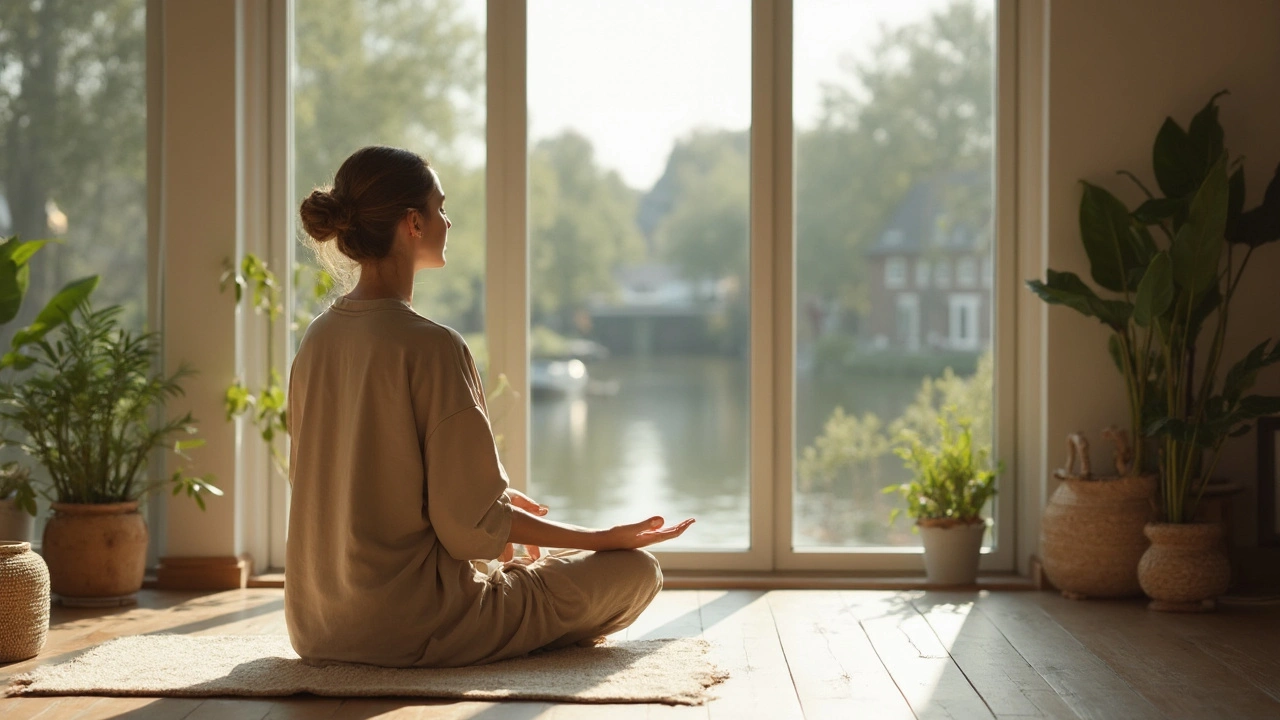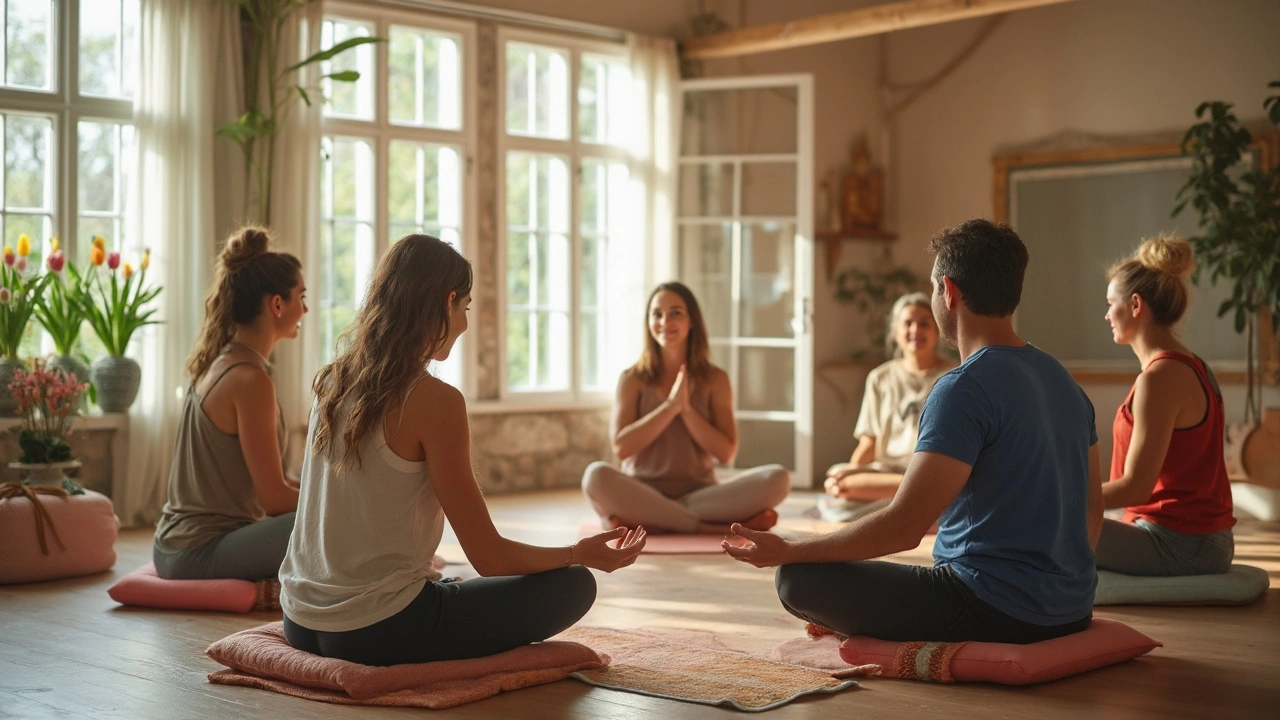Thai Massage and Mindfulness: How They're Connected

Ever had one of those days when your mind just refuses to slow down, even though your body feels wiped out? That’s where Thai massage mixed with a bit of mindfulness really steps up. We’re not just talking about someone pressing on your back and calling it a day—there’s a real art here. Thai massage actually brings your full attention right back into your body, cutting through that brain fog we all know too well.
People love Thai massage for good reason. The stretching, the gentle pressure, the deep breaths—it all adds up to a unique experience that’s about way more than just loosening tight muscles. By adding mindfulness into the mix, you start ditching distractions and focusing on what your body needs, right now. It’s almost like giving your mind and your muscles permission to chill out together, which sounds simple but honestly feels like a luxury in today’s nonstop world.
If you’re curious about how to really make the most of your next Thai massage, or want to know why everyone’s raving about this combo, keep reading. We’ll get right into how it works, what to expect, and little tweaks you can try to turn your next session into something that leaves you calmer, clearer, and totally recharged.
- Key Takeaways: Thai Massage & Mindfulness
- Why Mindfulness and Thai Massage Work So Well Together
- How a Thai Massage Session Unfolds
- Tips for a More Mindful Massage Experience
Key Takeaways: Thai Massage & Mindfulness
If you’re trying to figure out what makes Thai massage click so well with mindfulness, you’ll want the straight facts. Here’s a breakdown of what you need to know, whether you’re new to this or just looking to get more out of your next session.
- Thai massage isn’t like your typical spa massage. It’s done fully clothed, on a mat, and involves stretches, pressure points, and deep breathing.
- Mindfulness during a session isn’t just a nice extra—it actually helps you tune into each feeling, making the whole experience more effective.
- The slow, intentional movements encourage you to focus on your breath and how your body feels, bringing your mind back every time it drifts off.
- Pairing mindfulness with Thai massage can lower stress hormones like cortisol. One study out of Chiang Mai in 2021 saw participants report a 40% drop in stress and better overall mood after just one month of weekly sessions.
- This combo may help with chronic pain and anxiety. People who fully engage their attention during sessions tend to report longer-lasting relief.
- Listening to your body during massage makes it easier to spot tight spots, understand your limits, and avoid injury.
Here’s a handy summary if you’re a data fan:
| Benefit | What Happens | Stat/Fact |
|---|---|---|
| Stress Reduction | Reduced cortisol levels, improved mood | 40% lower stress after 1 month (Chiang Mai, 2021) |
| Pain Relief | Relieves muscle tension, boosts relaxation | Longer-lasting results with mindfulness |
| Mental Clarity | Increased self-awareness, sharp focus | Clients reported improved clear-headedness |
So, made simple: Thai massage gets your body feeling better, mindfulness keeps your mind in the game, and together, they double down on relaxation and benefit. Next time you hop on that mat, give your attention some credit—your body and mind will thank you for it.
Why Mindfulness and Thai Massage Work So Well Together
Here’s the thing: Thai massage isn’t just about stretching your muscles. It’s also about tuning in to what’s going on inside you, and that’s a perfect recipe for mindfulness. The techniques used in Thai massage—like gentle pressure, assisted yoga positions, and slow rhythmic movement—almost force you to notice your breath, your tension, and what actually feels good or uncomfortable.
Some studies from 2023 actually show that people who practice mindfulness while getting a Thai massage report lower stress and better quality sleep than those who just zone out. Therapists are even trained to read the body’s cues and encourage you to focus on your sensations, nudging you into the present moment without a lot of effort on your part. That’s pretty rare in a world full of distractions.
If you’ve ever tried meditation and felt like your mind was jumping all over the place, you’ll appreciate how Thai massage gives you something physical to latch onto. The guided stretches and steady pressure make it easier to notice what’s happening in your body, which pulls your attention away from mental clutter. It’s almost like your mind and body team up to press pause on outside stress.
- Focusing on the present helps increase body awareness during the massage.
- Breathing deeply makes it easier to relax into each stretch and movement.
- Noticing sensations (rather than your to-do list) can lead to a calmer, clearer head.
Therapists also recommend setting an intention before the session starts, like, “I want to feel more relaxed,” or, “I want to drop stress.” This tiny bit of prep makes mindfulness during the massage way more effective.
| Benefit | Reported Increase* |
|---|---|
| Quality of Sleep | 28% improvement |
| Stress Reduction | 35% reduction |
| Overall Wellbeing | 24% improvement |
*Based on data from a 2023 wellness survey of people who had 4 or more mindful Thai massage sessions in a month.

How a Thai Massage Session Unfolds
Walking into your first Thai massage session? It may feel a little different from your regular spa visit. First, there’s no oil involved and you keep comfy clothes on—think stretchy gym wear, not a fluffy robe. You’ll usually lie on a firm mat on the floor, not a high massage table. The whole setup is all about letting your body move freely, just like it’s meant to.
The therapist does a quick check-in with you about your health and any problem spots. Then, they get to work—using hands, thumbs, elbows, even feet—to apply rhythmic pressure along your body’s energy lines, called “Sen” lines. These aren’t made up; they’re rooted in traditional Thai medicine and have been passed down for over 2,500 years. Expect gentle joint rotations, deep stretches, and lots of guided movement. It’s sometimes called "lazy yoga" because the therapist basically moves your body through stretches while you just breathe and relax.
If you’re looking for something more than just muscle relief, pay attention to how thai massage naturally nudges you to focus on your breath and the sensations in your body. This is mindfulness in action—even if you’ve never meditated, you’ll probably notice your mind start to settle down during the session.
Here’s a quick rundown of what usually happens during a traditional Thai massage:
- Intake and greeting: Chat with your therapist about how your body feels today.
- Change into loose clothes: Most places provide their own, but comfy gym stuff works too.
- Body scan: The therapist feels for tension or imbalance.
- Pressure work and stretching: The therapist works from your feet up, using steady pressure and guiding your limbs into stretches.
- Mindful breathing: You’ll often be reminded to sync your breath with the movements, which helps deepen relaxation.
- Wrap-up: The therapist might do a gentle face or scalp massage to bring you back into the room—in one piece, and a lot more chilled out.
A session usually lasts anywhere from 60 to 120 minutes. The longer sessions go deeper into stretches and cover more of your body. Check out the quick stats below, based on typical experiences in reputable Thai massage places:
| Session Length | Average Cost (USD) | Main Focus |
|---|---|---|
| 60 minutes | 40-60 | Full-body tune-up and relaxation |
| 90 minutes | 60-85 | Deeper stretching and focus on problem areas |
| 120 minutes | 80-120 | Complete body overhaul, advanced stretches |
It’s totally normal to feel a mix of loose, energized, and seriously chill afterwards. Hydrate well and avoid heavy meals right before your session, since all those stretches can get your system moving.
Tips for a More Mindful Massage Experience
If you want your next session to go beyond basic relaxation and really tap into all the perks of a thai massage, a bit of planning and simple tweaks can make a big difference. It’s not just about lying there—your mind has a role too. Here are specific, real-world ways to get more out of your time on the mat:
- Set a clear intention before you start. A quick check-in with yourself—"What do I hope to get from this session?"—helps you stay present and makes the whole experience more personal.
- Focus on how your body feels, not just your thoughts. When your mind starts to wander, gently shift your attention back to the sensation of hands on your muscles, your breath, or the feeling of a deep stretch. This is the kind of mindfulness that research shows can lower stress hormones.
- Try mindful breathing. Simple, slow inhales and exhales keep you grounded. If you start stressing about tomorrow's chores, come back to your breath—think of it as your anchor.
- Communicate with your therapist. Don’t be shy about speaking up. If a stretch feels amazing or odd, let them know. This not only keeps you safe but also encourages you to tune into your body’s signals.
- Stay off your phone for at least 15 minutes before and after. You’ll settle in more quickly and get the full "reset" effect. Scrolling right after a session quickly wrecks that chilled-out vibe, and the benefits drop fast.
Here’s a handy comparison showing how simple changes boost the results of a Thai massage:
| Without Mindfulness | With Mindfulness |
|---|---|
| Just physical relaxation | Physical & mental relaxation |
| Easily distracted by outside thoughts | Better focus and presence |
| Short-lived effects | Longer-lasting calm and reduced stress |
| Lower awareness of body's needs | Stronger mind-body connection |
And just a quick fact: a study published in the "Journal of Bodywork and Movement Therapies" found that people who practiced focused breathing during Thai massage reported 30% greater stress drop compared to those who didn’t. It's worth trying, right?
So next time you set up your mat or book a session, use one or two of these tips. You might be surprised at how much deeper and more restorative your massage feels—like it actually sticks with you all week, not just for an hour.


